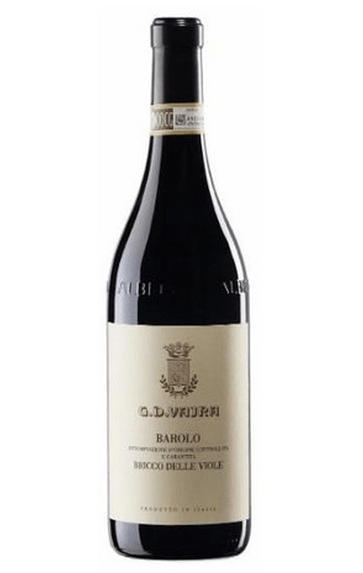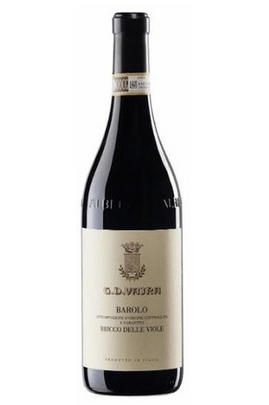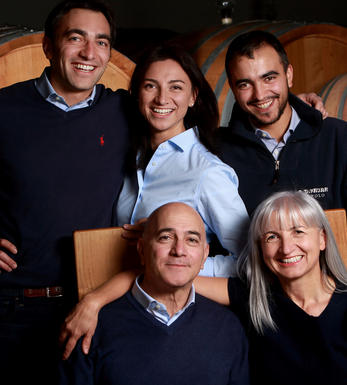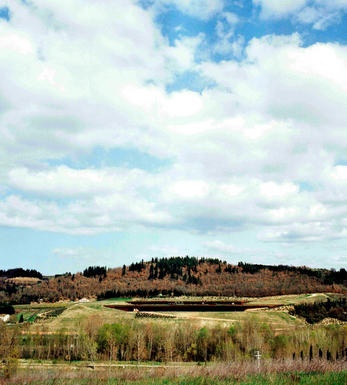
2015 Barolo, Bricco delle Viole, G.D. Vajra, Piedmont, Italy

Critics reviews
Drink 2021-2041
Antonio Galloni, Vinous (Nov 2018)
Drink 2020-2030
jancisrobinson.com (May 2019)
Drink 2022 - 2040
Monica Larner, Wine Advocate (Jun 2019)
Drink 2021-2036
Decanter (Jan 2019)
About this WINE

G. D. Vajra
Based in Vergne, the highest village in the commune of Barolo, GD Vajra is a relatively young estate. It was established by Aldo Vajra in 1972, when he was just 16. His father had planted vineyards in 1947 but called Aldo “mad” when he followed his childhood dream to become a winemaker. Taking over the family estate in 1968, he became one of the early pioneers of organic farming, and in 1971 the estate became one of the first in Piedmont to be organically certified. Until now, Vajra’s wines have somewhat flown under the radar, but it’s with good reason that the estate has been described as “one of Piedmont’s best kept secrets… with sublime hand-crafted, artisan wines of the very highest level”.
The Vajra team deduced that lots of flowers on a vine indicate a vintage more likely to have spacious, aromatic fruit. 2019’s fruit set was low, giving the vintage concentration. July’s heat spikes didn’t cause any issues, while the dull August preserved a spine of acidity. Harvest was the longest and latest of the past decade, and the decision was taken to shorten the period of skin contact after fermentation to under 30 days. The time in wood was also reduced by two or three months. The definition of the 2019 vintage suits the purity of the Vajra style very well.

Chianti Classico
Chianti Classico is a leading Tuscan DOCG zone which covers approximately 7,000 hectares between Florence and Siena. Its vineyards stretch into the Apennine foothills at altitudes of between 150m and 500m, and encompass two distinct terroirs and styles. The sandy, alluvial soils of the lower sites yield fuller, meatier wines while the limestone and galestro rocks of the higher vineyards deliver finer, more ethereal examples.
The origins of Chianti date back to the Middle Ages, although Chianti Classico was really born in 1716 when Grand Duke Cosimo III of Tuscany classified the zone, identifying the villages of Radda, Greve, Panzano, Gaiole and Castellina as the leading sites; these same villages still represent the nucleus of the Chianti Classico DOCG today. The regulations have been revised, however, to insist that the wine is made from a minimum 80 percent Sangiovese and a maximum 20 percent Canaiolo and ameliorative grapes (ie Merlot and Cabernet Sauvignon); from the 2006 vintage, no white grapes are allowed.
Chianti Classico cannot be released until 1st October in the year following the harvest, while Chianti Classico Riserva must undergo 24 months of ageing before release, including at least three months in bottle. At the region’s top addresses, French barriques are gradually being adopted in the place of the traditional, larger slavonian botte.
Recommended Producers: Monte Bernardi, Tenuta Fontodi, Castelo di Ama, Bibbiano

Nebbiolo
Nebbiolo is the grape behind the Barolo and Barbaresco wines and is hardly ever seen outside the confines of Piedmont. It takes its name from "nebbia" which is Italian for fog, a frequent phenomenon in the region.
A notoriously pernickety grape, it requires sheltered south-facing sites and performs best on the well-drained calcareous marls to the north and south of Alba in the DOCG zones of Barbaresco and Barolo.
Langhe Nebbiolo is effectively the ‘second wine’ of Piedmont’s great Barolo & Barbarescos. This DOC is the only way Langhe producers can declassify their Barolo or Barbaresco fruit or wines to make an early-drinking style. Unlike Nebbiolo d’Alba, Langhe Nebbiolo can be cut with 15% other red indigenous varieties, such as Barbera or Dolcetto.
Nebbiolo flowers early and ripens late, so a long hang time, producing high levels of sugar, acidity and tannins; the challenge being to harvest the fruit with these three elements ripe and in balance. The best Barolos and Barbarescos are perfumed with aromas of tar, rose, mint, chocolate, liquorice and truffles. They age brilliantly and the very best need ten years to show at their best.


Buying options
Add to wishlist
Description
The flagship Barolo Bricco delle Viole is quite understated and gracious in 2015. Medium in body, with the persistent tannins that are so typical of this site, the 2015 is lithe, focused and full of energy. The warm vintage notwithstanding, in 2015, Vajra's Bricco delle Viole is distinctly sinewy and tense. It will offer considerable appeal to readers who find some of the other 2015 Barolos too open and giving in their youthful stage. Kirsch, rose petal, mint and chalky notes build into a finely cut finish. Time in the glass softens some of the youthful, austere contours, but this remains a 2015 Barolo that needs time in bottle to be at its very best.
Drink 2021-2041
Antonio Galloni, Vinous (Nov 2018)
wine at a glance
Delivery and quality guarantee